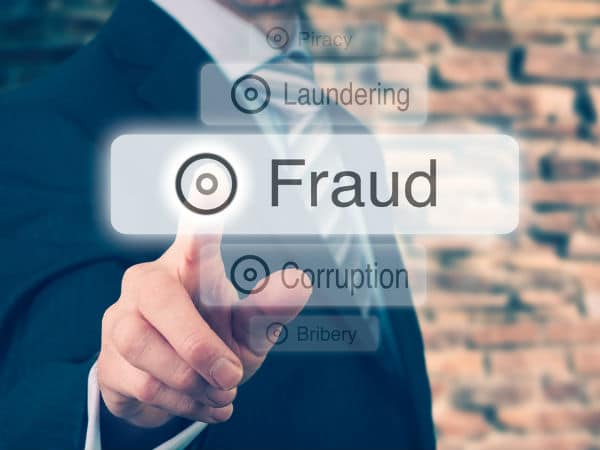GPB Capital Executives Jailed: Unraveling a $1.6 Billion Web of Lies and Investor Deception
Brooklyn, NY – The architects of a sprawling $1.6 billion fraud that victimized over 10,000 investors faced their day of reckoning as David Gentile, the founder and former Chief Executive Officer (CEO) of GPB Capital, and Jeffry Schneider, the former CEO of Ascendant Capital, were sentenced to significant prison terms. United States District Judge Rachel P. Kovner handed down a seven-year sentence to Gentile and a six-year sentence to Schneider for their pivotal roles in a scheme that systematically misrepresented the financial health and operational realities of GPB Capital’s private equity funds.
The sentences mark a crucial chapter in a saga of deceit that saw the defendants raise vast sums based on false promises of lucrative returns, only to use investor capital to pay distributions and create a mirage of success. Both Gentile and Schneider were convicted by a federal jury in August 2024 after an exhaustive eight-week trial on charges including securities fraud, securities fraud conspiracy, and wire fraud conspiracy; Gentile was additionally convicted of wire fraud. While forfeiture and restitution penalties are yet to be determined, the prison sentences send a stark message about accountability in high-stakes financial crime.
“The defendants built GPB Capital on a foundation of lies,” declared United States Attorney Joseph Nocella, Jr., for the Eastern District of New York. “They raised approximately $1.6 billion from individual investors based on false promises of generating investment…source
This report delves into the intricate details of the GPB Capital scheme, from its promising inception to its ignominious collapse, examining the key players, the mechanics of the fraud, the devastating impact on investors, and the broader implications for the financial industry.
The Genesis of GPB Capital: A High-Yield Promise in a Low-Rate World
GPB Capital Holdings was established in 2013 by David Gentile, a Long Island accountant. The firm positioned itself as a manager of high-risk, high-cost private placements, quickly amassing approximately $1.6 billion to $1.8 billion from investors. Its investment strategy primarily targeted auto dealerships and waste hauling businesses, promising a steady, attractive 8% annual return to investors. This was presented as “income-producing” private equity, where investors would receive monthly distributions purportedly from the cash flow generated by these portfolio companies, in addition to an eventual return on their principal investment.
The specific funds at the heart of the operation included GPB Holdings I, LP (Holdings I), GPB Holdings II, LP (Holdings II), and GPB Automotive Portfolio, LP (GPB AP). Other funds, such as GPB Waste Management LP and GPB Cold Storage LP, were also part of GPB Capital’s portfolio.
The timing of GPB Capital’s emergence was particularly opportune. In the years following the 2008 financial crisis, interest rates hovered near historic lows, leaving many investors, particularly wealthy individuals, searching for alternative sources of yield. The promise of a consistent 8% annual return, paid monthly, was a powerful lure in such an environment. This made GPB’s offerings appear especially attractive, drawing in capital from those eager to find returns that traditional fixed-income investments could no longer provide. The allure of private placements, often perceived as sophisticated investment vehicles, further contributed to GPB’s ability to raise substantial capital, despite the inherent risks and higher costs often associated with such investments.
The Architects of Deceit: Gentile, Schneider, and Lash
The fraudulent enterprise at GPB Capital was orchestrated by a trio of individuals, each playing a distinct yet complementary role in the deception that ultimately defrauded thousands.
David Gentile: The Founder and Mastermind David Gentile, 58, of Manhasset, Long Island, was the founder and former CEO of GPB Capital. Before establishing GPB in 2013, Gentile had a background as an accountant. As the head of GPB, he was centrally involved in the firm’s investment decisions and day-to-day operations, and he personally pitched the funds to broker-dealers and registered investment advisors. Gentile was convicted of securities fraud, securities fraud conspiracy, wire fraud conspiracy, and wire fraud, receiving a seven-year prison sentence. His accounting background may have lent an air of financial sophistication and trustworthiness to GPB’s operations, at least superficially, making the misrepresentations about fund performance and financial health more believable to outsiders.
Jeffry Schneider: The Salesman with a Shadowed Past Jeffry Schneider, 56, of Austin, Texas, was the former CEO of Ascendant Capital LLC, the marketing firm that served as the exclusive placement agent for GPB Capital. Schneider had an extensive background in the financial services industry, with previous roles at prominent firms like Merrill Lynch, Smith Barney, and CIBC Oppenheimer. He worked in close concert with Gentile on the operation and marketing of the GPB Funds.
However, Schneider’s career was marred by a “long and troubled history in the securities industry,” a fact not disclosed to GPB investors. His Financial Industry Regulatory Authority (FINRA) BrokerCheck report, under CRD# 2089051, details a concerning pattern: terminations from previous employers, a 90-day suspension and $15,000 fine by the National Association of Securities Dealers (NASD, a precursor to FINRA) in 2004, and a denial of his salesperson registration application by the Illinois Secretary of State in 2006, resulting in a two-year ban from re-applying in that state. Furthermore, he was the subject of fourteen customer complaints alleging misconduct such as unauthorized trading, unsuitable investments, and misrepresentation. Despite this checkered past, Schneider was instrumental in raising capital for GPB. He was convicted of securities fraud, securities fraud conspiracy, and wire fraud conspiracy, and was sentenced to six years in prison.
The partnership between Gentile, with his veneer of financial legitimacy, and Schneider, the seasoned salesman, proved to be a potent combination for both perpetrating and marketing the fraud. Gentile could project an image of sound financial management, while Schneider, despite his documented history of misconduct, possessed the sales network and aggressive marketing tactics necessary to bring in vast sums of investor money. This synergy was crucial to the scale of the deception achieved. Schneider’s ability to operate at such a high level, as CEO of GPB’s exclusive placement agent, despite a significant and publicly discoverable disciplinary history, raises serious questions. It suggests potential lapses in regulatory oversight or, more troublingly, a failure of due diligence by the dozens of independent broker-dealers who partnered with Ascendant Capital to sell GPB products. This points to a systemic vulnerability where past misconduct may not sufficiently impede individuals from re-entering and significantly influencing financial operations, particularly within the less transparent private placement market.
Jeffrey Lash: The Co-Conspirator Jeffrey Lash served as a managing partner at GPB Capital and was primarily responsible for overseeing the firm’s investments in auto dealerships. He played a key role in the mechanics of the fraud by executing fraudulent, back-dated “performance guarantees” at the direction of Gentile and Schneider. These guarantees were used to falsely inflate the income of certain GPB funds. In 2023, Lash pleaded guilty to wire fraud and subsequently testified against Gentile and Schneider during their trial, providing crucial insider testimony that helped secure their convictions. His sentencing is pending.
Table 1: Key Figures in the GPB Capital Fraud
| Name | Title/Affiliation | Key Role in Scheme | Conviction(s) | Sentence |
|---|---|---|---|---|
| David Gentile | Founder & former CEO, GPB Capital | Orchestrated fraud, misrepresented fund performance, authorized illicit payments | Securities fraud, securities fraud conspiracy, wire fraud conspiracy, wire fraud | 7 years |
| Jeffry Schneider | Former CEO, Ascendant Capital (GPB placement agent) | Marketed GPB funds, misrepresented distribution sources, co-conspired in fraud | Securities fraud, securities fraud conspiracy, wire fraud conspiracy | 6 years |
| Jeffrey Lash | Former Managing Partner, GPB Capital | Executed fraudulent performance guarantees, facilitated misrepresentations; later cooperated with the government | Pleaded guilty to wire fraud | Pending |
Export to Sheets
The Anatomy of a Billion-Dollar Deception: How the Fraud Unfolded
The GPB Capital fraud was not a simple act of theft but a carefully constructed illusion designed to lure investors with promises of steady income while concealing the funds’ underperformance and illicit activities.
The “Income-Producing” Illusion GPB Capital and its marketing arm, Ascendant Capital, aggressively pitched the GPB funds—notably Holdings I, Holdings II, and GPB Automotive Portfolio—as “income-producing” private equity investments. The core promise was that investors would receive substantial monthly distributions, often targeting an 8% annual yield, generated directly from the cash flow of the portfolio companies, primarily auto dealerships and waste management businesses. This narrative was particularly appealing to investors seeking consistent returns in a low-interest-rate environment.
Misrepresentation of Distribution Sources (The Ponzi-like Element) The reality, however, starkly contrasted with these representations. Between approximately August 2015 and December 2018, when the GPB funds’ actual performance lagged and failed to generate sufficient income to cover the promised distributions, Gentile and Schneider directed the use of new investor capital to make these payments. This created a false appearance of success and profitability, a hallmark of a Ponzi-like scheme, as acknowledged by the Securities and Exchange Commission (SEC) and other observers. Approximately $100 million in investor capital was diverted to cover these distributions, effectively paying existing investors with money from new investors rather than from legitimate operational profits.
Fraudulent Performance Guarantees To further bolster the illusion of financial health and justify the distributions, the defendants, with the participation of Jeffrey Lash, resorted to fabricating income. In 2015 and 2016, they used fraudulent, back-dated “performance guarantees” to artificially inflate the reported income of GPB Holdings I and GPB Automotive Portfolio. Lash, a GPB operating partner, executed these guarantees for certain auto dealerships owned by the funds, falsely representing that he had agreed to cover any profit shortfalls. For instance, in March 2015, Lash executed two such guarantees for dealerships in Holdings I for the 2014 audit year. In April 2016, another fraudulent guarantee was created for a dealership in GPB AP for the 2015 audit year.
To make these paper guarantees appear legitimate, Gentile orchestrated the movement of funds from another GPB-owned fund through Lash’s accounts, creating the false impression that Lash had actually paid on these guarantees. Holdings I and GPB AP then booked this fictitious income in their audited financial statements, which were presented to investors. This artificial inflation of returns for 2014 and 2015 helped GPB Capital raise approximately an additional $1 billion from unsuspecting investors.
This dual deception strategy—misrepresenting the source of distributions and fabricating performance guarantees—reveals a sophisticated, multi-layered approach to the fraud. It was not a single lie, but an interconnected web of deceit. Paying distributions from investor capital kept existing investors placated and created an artificial track record of “steady returns” to entice new ones. Simultaneously, the fraudulent performance guarantees artificially boosted reported income on audited financial statements, making the funds appear far healthier and more profitable than they truly were. This, in turn, directly influenced investment decisions and facilitated further capital raising. These two tactics worked in tandem: the “guaranteed” performance seemingly justified the distributions, and the consistent distributions reinforced the perception of strong performance, making the fraud more robust and difficult to detect in its early stages.
The Scale of the Take Through these deceptive practices, GPB Capital and Ascendant Capital collectively raised approximately $1.6 billion for the three primary funds—Holdings I, Holdings II, and GPB AP—from more than 10,000 individual investors. Some reports suggest the total amount raised across all GPB funds reached $1.8 billion from as many as 17,000 to 18,000 investors.
Table 2: GPB Capital Funds at the Center of the Fraud
| Fund Name | Primary Investment Focus (examples) | Key Misrepresentations Associated | Investor Capital Involved (approx.) |
|---|---|---|---|
| GPB Holdings I, LP (Holdings I) | Auto dealerships, Waste Mgmt. | Distributions paid from investor capital, income inflated by fraudulent performance guarantees | Part of $1.6B total |
| GPB Holdings II, LP (Holdings II) | Auto dealerships, Waste Mgmt. | Distributions paid from investor capital | Part of $1.6B total |
| GPB Automotive Portfolio, LP | Auto dealerships | Distributions paid from investor capital, income inflated by fraudulent performance guarantees | Part of $1.6B total |
| GPB Waste Management, LP | Waste hauling businesses | Distributions paid from investor capital (Ponzi-like scheme alleged for GPB funds generally) | Part of overall scheme |
| GPB Cold Storage, LP | Cold storage facilities | Distributions paid from investor capital (Ponzi-like scheme alleged for GPB funds generally) | Part of overall scheme |
Export to Sheets
Chronicle of Collapse: From Red Flags to Raids and Convictions
The elaborate façade constructed by GPB Capital began to crumble in 2018, triggering a chain of events that ultimately led to the convictions and sentencing of its key executives. The timeline from the first public red flags to the final sentencing spanned seven years, underscoring the complexity and resource-intensive nature of investigating and prosecuting large-scale financial fraud. This protracted period undoubtedly exacerbated investor anxiety and financial hardship, as victims were left in limbo for years.
Early Warning Signs (2018) The first significant public indications of trouble at GPB Capital emerged in 2018. The company and its largest funds failed to make timely required filings with the Securities and Exchange Commission (SEC), including crucial audited financial statements. Around the same time, GPB suspended distributions to its investors, who have not seen any returns since that year. These developments immediately raised concerns among investors and regulatory bodies.
Investigations Intensify (2019-2021) The situation escalated dramatically in February 2019 when the Federal Bureau of Investigation (FBI) raided GPB Capital’s Manhattan offices. This high-profile action signaled the depth of the problems at the firm. The investigation involved a multi-agency effort, including the SEC, the Department of Justice (DOJ), and various state securities regulators from New York, New Jersey, Alabama, Georgia, Illinois, Missouri, South Carolina, and Massachusetts. The New York City Business Integrity Commission (BIC) also played a role, particularly concerning GPB’s investments in the waste management sector, such as Five Star Carting (later GPB Waste NY). The New York City Police Department (NYPD) was also acknowledged for its assistance in the case.
In February 2021, the DOJ and SEC unsealed indictments and civil charges, respectively, against David Gentile, Jeffry Schneider, and Jeffrey Lash, accusing them of securities fraud, wire fraud, conspiracy, and operating a Ponzi-like scheme. That same month, the court appointed Joseph T. Gardemal III of Alvarez & Marsal as a monitor to oversee GPB Capital’s operations.
The Trial and Verdict (2024) After years of investigation and legal proceedings, the criminal case against Gentile and Schneider went to trial. Following an eight-week trial in federal court in Brooklyn, a jury convicted both defendants on all counts in August 2024. Jeffrey Lash had previously pleaded guilty to wire fraud in 2023 and testified against his former associates.
Sentencing and Receivership (2023-2025) In December 2023, the court converted the monitorship over GPB Capital into a receivership, with Joseph T. Gardemal III continuing as the receiver, tasked with managing GPB’s remaining assets and working towards investor restitution. In April 2025, the court approved an initial $400 million payout plan for investors from the receivership. Finally, in May 2025 (based on the timing of the DOJ press release and other reports), Gentile and Schneider were sentenced to seven and six years in prison, respectively.
Table 3: Timeline of the GPB Capital Investigation and Legal Action
| Date/Year | Significant Event | Source Snippets (Examples) |
|---|---|---|
| 2013 | GPB Capital founded by David Gentile. | DOJ Press Release, |
| ~2015 – 2018 | Misrepresentations about fund performance and distribution sources begin. Fraudulent performance guarantees used. | DOJ Press Release, |
| 2018 | GPB fails to make timely SEC filings (audited financials); suspends investor distributions. | |
| Feb 2019 | FBI raids GPB’s Manhattan offices. NYC Business Integrity Commission involved. | |
| 2021 | DOJ and SEC charge Gentile, Schneider, and Lash with fraud and conspiracy. Multiple state regulators file actions. | |
| Feb 2021 | Court appoints Joseph T. Gardemal III as monitor for GPB. | |
| 2023 | Jeffrey Lash pleads guilty to wire fraud. | DOJ Press Release, |
| Dec 2023 | Monitorship converted to receivership by court. | |
| Aug 2024 | Gentile and Schneider convicted by federal jury after eight-week trial. | DOJ Press Release, |
| April 2025 | Court approves $400 million initial payout plan for investors. | |
| May 2025 (est.) | Gentile and Schneider sentenced to prison. | DOJ Press Release, |
The Aftermath: Investor Impact and the Road to Restitution
The collapse of GPB Capital left a trail of financial devastation for its more than 10,000 investors, many of whom were wealthy individuals or “accredited investors” lured by the promise of high, stable yields. While the recent approval of an initial $400 million distribution offers some measure of relief, it represents only a fraction of the approximately $1.6 to $1.8 billion invested, underscoring the harsh reality that victims of large-scale financial fraud seldom achieve full recovery. The process is also invariably lengthy and complex, compounding the financial and emotional toll on those affected.
Victims of the Scheme The scheme defrauded a vast pool of investors across the nation. While the DOJ press release cites over 10,000 investors, other sources suggest the number could be as high as 17,000 to 18,000. These investors had entrusted significant sums to GPB Capital, often through financial advisors who recommended the private placements.
Financial Losses Investors have not received any distributions or returns from GPB Capital since 2018. The firm had raised approximately $1.6 billion through the fraudulent scheme, and an estimated $100 million of this investor capital was improperly used to pay earlier distributions. By the end of 2018, GPB’s own (unaudited) valuations indicated substantial losses across its funds, with declines ranging from 25% to as high as 73% for some funds. For example, GPB Holdings II was reported to be down 25.4%, GPB Automotive Portfolio down 38%, and the GPB Armada Waste Management Fund had plummeted by a staggering 67.4%.
Restitution Efforts Following the exposure of the fraud, efforts to recover assets for investors commenced. Joseph T. Gardemal III of Alvarez & Marsal Holdings LLC was appointed as a court monitor in February 2021, and his role was converted to that of a receiver in December 2023. The receiver’s mandate is to marshal GPB’s remaining assets and distribute them to defrauded investors.
A significant step towards restitution occurred on April 9, 2025, when a federal judge approved an initial $400 million payout plan. These funds were designated for investors in GPB Automotive Portfolio, GPB Holdings II, and GPB Cold Storage, with checks mailed around April 25, 2025. It is estimated that most investors might eventually recover between 30% and 60% of their original investment, though this will depend on the success of ongoing asset liquidation and potential future distributions. The court-appointed receiver reportedly retains an additional $719 million for future distributions. The deadline for investors to file proofs of claim against the receivership entities was established as May 23, 2025.
The disparity between the total capital raised and the initial distribution amount highlights the challenging path to recovery. Even if further distributions materialize, a substantial portion of investor capital appears to be irretrievably lost. The protracted timeline, with investors waiting since 2018 for any return of capital and the first significant distribution plan only approved in 2025, underscores the devastating long-term financial impact and the inherent limitations of restitution processes in complex fraud cases.
The Enablers: Role of Ascendant Capital and Broker-Dealers
The GPB Capital fraud was not perpetrated in a vacuum. It relied on a network of entities and individuals to market and sell its toxic private placements to investors. Key among these were Ascendant Capital, led by Jeffry Schneider, and the numerous independent broker-dealers who sold GPB products, often lured by substantial commissions. The case throws a harsh spotlight on potential conflicts of interest within the private placement ecosystem, where the allure of high commissions can seemingly override crucial due diligence and suitability obligations owed to clients.
Ascendant Capital: The Exclusive Marketer Ascendant Capital LLC, founded and helmed by Jeffry Schneider, served as the exclusive placement agent for GPB Capital’s funds. Ascendant played a critical role in the scheme by aggressively marketing GPB’s investments to a wide network of broker-dealers and, through them, to individual investors. Their marketing materials consistently promised steady returns, which, as established, were often funded by new investor money rather than operational profits, thereby misleading investors about the true nature and performance of the investments.
Broker-Dealers: The Sales Network Dozens of independent broker-dealer firms across the country formed the sales network that channeled investor money into GPB’s funds. These firms and their registered representatives sold GPB’s high-risk, illiquid private placements, often to clients seeking yield. A significant incentive for these sales appears to have been the exceptionally high commissions offered by GPB, reportedly as much as 7% to 10% of the invested amount. It has been reported that brokerage firms collectively earned over $167 million in commissions from selling GPB products.
Due Diligence Failures and Unsuitability Under FINRA rules, brokerage firms have a fundamental obligation to conduct thorough due diligence on the investments they recommend and to ensure that those investments are suitable for their clients based on their financial situation, investment objectives, and risk tolerance. There are substantial concerns that many broker-dealers failed in these duties concerning GPB Capital.
Several red flags should have been apparent. Jeffry Schneider’s “long and troubled history” in the securities industry, including prior sanctions and numerous customer complaints, was publicly accessible information via his CRD number. The fact that Ascendant Capital, run by an individual with such a history, was GPB’s exclusive placement agent should have prompted heightened scrutiny. Additionally, GPB’s failure to file timely audited financial statements starting in 2018 was a major warning sign. Despite these indicators, many firms continued to market and sell GPB investments. In some instances, financial representatives reportedly falsified client net worth information to make them appear as “accredited investors” qualified to purchase these risky private placements.
The aftermath has seen regulatory action. For example, FINRA fined 15 broker-dealers a total of $3.7 million in 2024 for their involvement in selling GPB Capital private placements without proper due diligence or disclosures. Dempsey Lord Smith, LLC, was another firm sanctioned by FINRA for unsuitable recommendations and for negligently omitting to inform investors about GPB’s failure to make required SEC filings.
The GPB saga strongly suggests that the substantial financial incentives for distributing complex, illiquid products like private placements can create an environment where investor protection mechanisms within the broker-dealer network are compromised. The ease with which Schneider, despite his past, could spearhead the marketing of a $1.6 billion scheme through this network is a particularly glaring example of these systemic vulnerabilities.
Comparative Justice: Sentencing in Context
The prison sentences of seven years for David Gentile and six years for Jeffry Schneider, while significant, invite comparison with penalties imposed in other notorious large-scale financial fraud cases. Such comparisons often fuel public debate about consistency and fairness in the sentencing of white-collar criminals.
Notable sentences in other major Ponzi schemes and financial frauds include:
- Bernard Madoff: Sentenced to 150 years in prison for orchestrating a Ponzi scheme estimated at $50-$65 billion, the largest in history. Other associates in the Madoff scheme received sentences ranging from two and a half to ten years.
- Allen Stanford: Received a 110-year prison sentence for a $7 billion Ponzi scheme involving fraudulent certificates of deposit. His associates received sentences between five and twenty years.
- Scott Rothstein: A disbarred lawyer, was sentenced to 50 years in prison for a $1.2 billion Ponzi scheme.
Federal sentencing guidelines for fraud cases are complex and take into account numerous factors, including the total amount of money stolen or defrauded, the number of victims and the impact on them, the sophistication of the scheme, the defendant’s role in the offense, and their criminal history. Charges like wire fraud and securities fraud can carry statutory maximum sentences of up to 20 or 30 years per count, respectively.
While the $1.6 to $1.8 billion involved in the GPB Capital fraud is a massive sum, it is less than the headline figures in the Madoff or Stanford cases. The sentences for Gentile and Schneider, though substantial, are considerably lower than the de facto life sentences given to Madoff and Stanford. This disparity may reflect several considerations. The GPB case centered on misrepresenting the performance of actual underlying businesses (auto dealerships, waste management) and the source of distributions, with approximately $100 million of investor capital directly used to pay other investors. This differs somewhat from schemes like Madoff’s, where virtually no legitimate investment activity occurred. The specific charges on which Gentile and Schneider were convicted, judicial discretion within the sentencing guidelines, and the extent of cooperation offered by defendants (though Jeffrey Lash was the primary cooperator explicitly mentioned in the GPB case) also play crucial roles in determining sentence length.
Nevertheless, the sentences, while reflecting the severity of the crimes, might be perceived by some victims and the public as relatively lenient when compared to the decades-long terms handed down in other prominent financial frauds. This could prompt further discussion about achieving consistency and perceived fairness in white-collar sentencing.
Ripple Effects: Investor Trust, Market Integrity, and Regulatory Vigilance
The GPB Capital scandal has sent shockwaves through the investment community, raising critical questions about investor protection, the integrity of the private placement market, and the efficacy of regulatory oversight. Such large-scale frauds inevitably erode trust, particularly among the “accredited investors” who were the primary targets of GPB’s offerings. The failure of numerous broker-dealers to adequately vet these investments and protect their clients further damages confidence.
However, it is noteworthy that the broader alternative investment market continues to attract significant capital. Major firms like Edward Jones are expanding their alternative investment platforms, suggesting a resilient overall demand for such products, driven partly by market volatility and the search for non-correlated assets. This indicates that while specific scandals can tarnish reputations, the fundamental investor appetite for alternatives persists.
The Critical Importance of Due Diligence The GPB case serves as a stark reminder of the paramount importance of investor vigilance and thorough due diligence. Investors must be skeptical of promises of guaranteed high returns or overly consistent performance, especially in opaque markets. GPB’s promise of a steady 8% annual return, coupled with its eventual failure to provide audited financial statements, were significant red flags. Pressure to invest quickly, issues with documentation, and the backgrounds of key individuals (like Schneider’s discoverable disciplinary history) are other warning signs that diligent investors and their advisors should heed.
Regulatory Scrutiny and Enforcement The successful prosecution of Gentile and Schneider was the result of extensive collaboration among multiple regulatory and law enforcement agencies, including the U.S. Attorney’s Office for the Eastern District of New York, the FBI, the SEC, the New York City Business Integrity Commission, and the NYPD. Numerous state securities regulators also played a crucial role by filing their own actions and assisting in the broader investigation. This coordinated effort highlights the multi-jurisdictional nature of modern financial fraud and the necessity of inter-agency cooperation to bring perpetrators to justice and protect market integrity.
The GPB Capital scandal may also reignite debates about the definition and protections afforded to “accredited investors.” The premise that meeting certain wealth or income thresholds automatically equates to financial sophistication and an ability to withstand the risks of complex private placements is challenged when thousands of such investors are defrauded on this scale. The fact that some brokers reportedly falsified client financial information to meet these thresholds further undermines the standard as a reliable measure of suitability or risk tolerance. This suggests that the regulatory framework relying on accredited investor status may need re-evaluation, particularly concerning disclosure requirements and the responsibilities of brokers recommending these products.
Furthermore, the GPB case could catalyze calls for greater transparency and stricter due diligence protocols within the private placement market. The opacity of these markets, combined with misleading marketing by placement agents like Ascendant Capital and sales driven by high commissions for broker-dealers, created fertile ground for fraud. The evident failures in due diligence by these intermediaries, especially concerning Schneider’s well-documented past, point to systemic weaknesses. While regulators like FINRA have taken action against some firms involved , the sheer scale of the GPB fraud may prompt broader discussions about systemic reforms to ensure that intermediaries act as more robust gatekeepers, rather than conduits for flawed products.
Conclusion: A Sobering Lesson in Greed, Deception, and the Pursuit of Justice
The sentencing of David Gentile and Jeffry Schneider marks a significant victory in the fight against sophisticated white-collar crime. The $1.6 billion GPB Capital scheme stands as a sobering testament to the destructive power of greed and deception in the financial markets. As U.S. Attorney Nocella stated, the sentences should serve as a clear “warning to would-be fraudsters that seeking to get rich by taking advantage of investors gets you only a one-way ticket to jail”. Similarly, FBI Assistant Director in Charge Raia hoped the sentencing would “deter anyone who seeks to greedily profit off their clients through deceitful practices”.
The case underscores the unwavering commitment of federal, state, and local authorities to protect investors and maintain the integrity of the financial markets. However, it also highlights the long and arduous road to justice for the victims. While restitution efforts are underway, the financial and emotional scars for over 10,000 defrauded investors will undoubtedly endure.
The GPB Capital saga also reveals the reactive nature of enforcement. The fraud was able to persist for several years, accumulating vast sums and causing significant harm before comprehensive regulatory and legal intervention dismantled it. This highlights the perpetual challenge for regulators to proactively detect and prevent sophisticated financial crimes that are often designed to appear legitimate on the surface. The fact that GPB Capital was found to have violated whistleblower provisions by impeding individuals from coming forward to the SEC further complicates early detection efforts. This reality emphasizes the critical need for continuous evolution in oversight strategies, robust whistleblower protections, and proactive auditing of high-risk entities within the less transparent corners of the financial world.
Ultimately, while regulatory bodies and law enforcement play a crucial role, the GPB Capital collapse reinforces the enduring importance of investor vigilance. A healthy skepticism towards promises that seem too good to be true, coupled with diligent research into both the investment and the professionals promoting it, remains the first and most critical line of defense against falling prey to such elaborate deceptions.Sources used in the report






